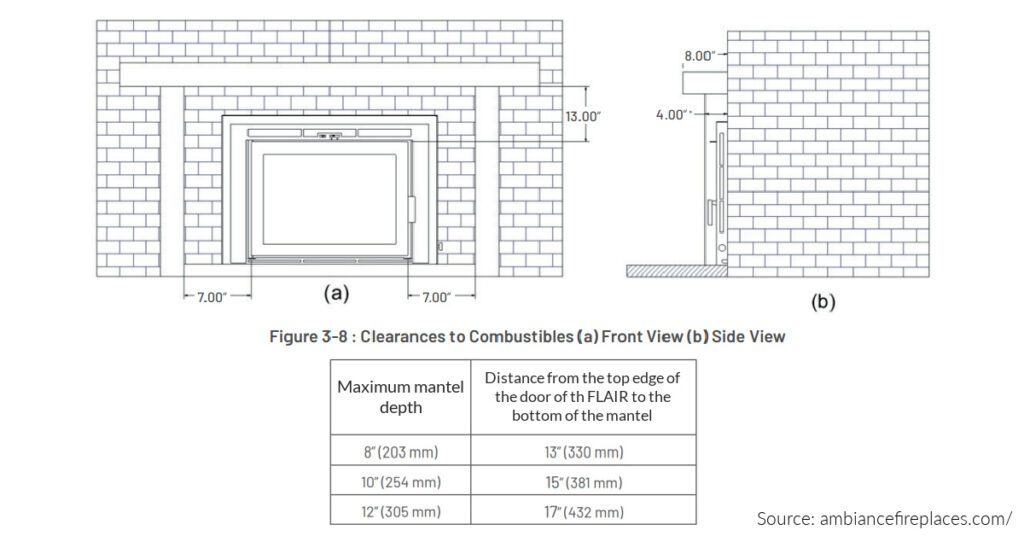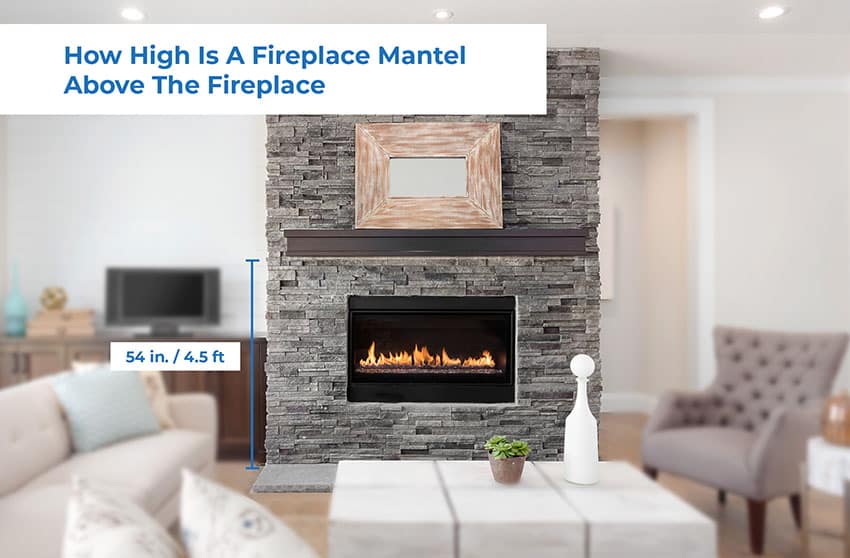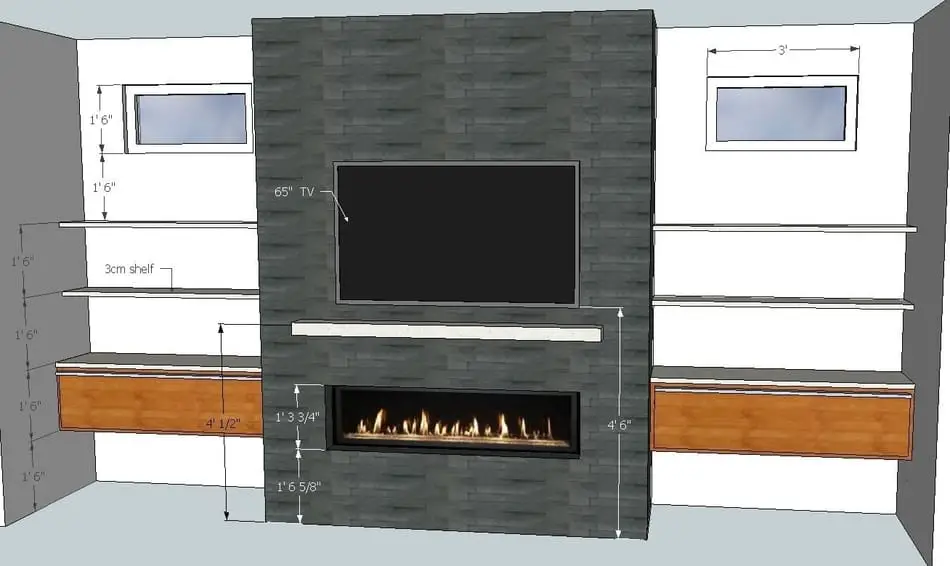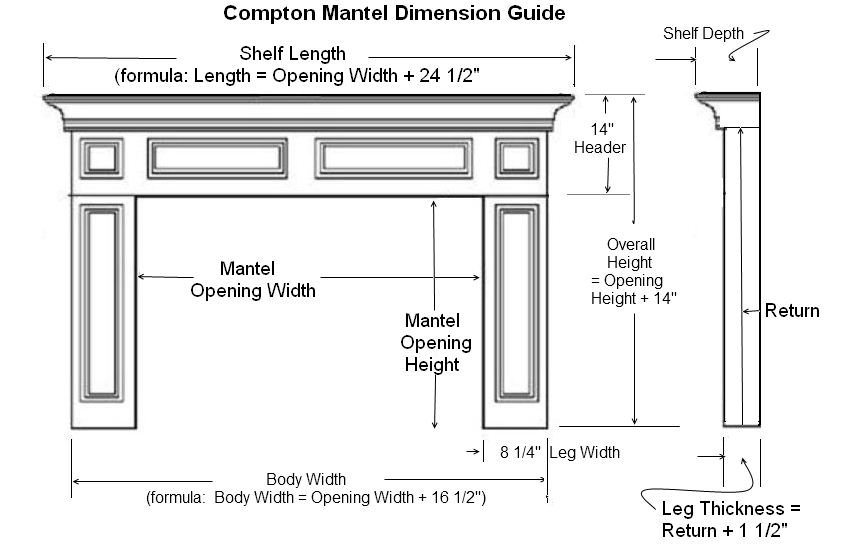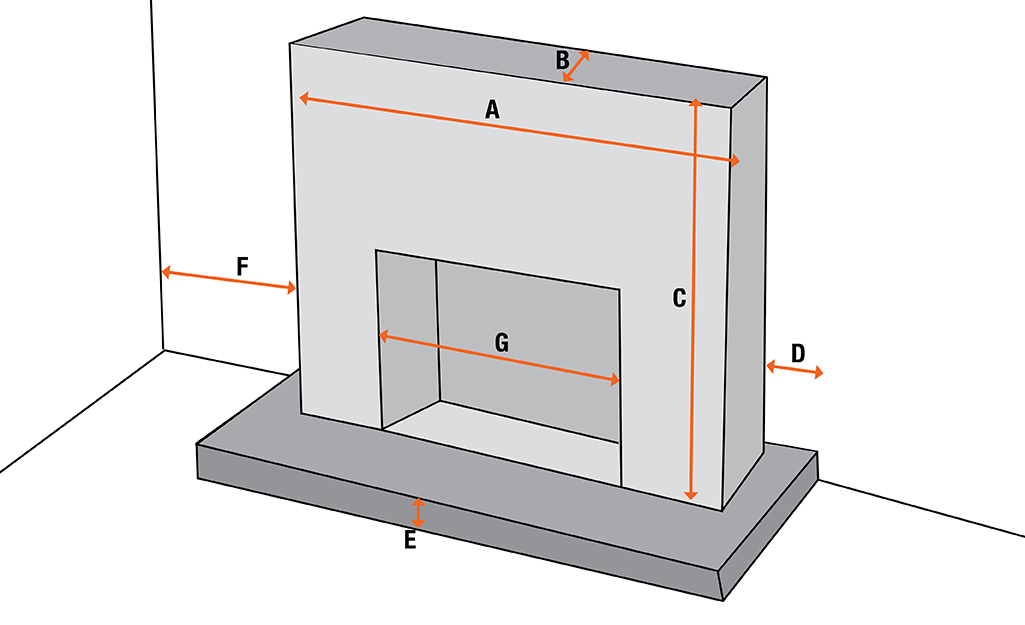Height Of Mantle Above Gas Fireplace

One of the most common heating issues homeowners encounter, especially during colder months, is inconsistent room temperature when using a gas fireplace. You might notice the area near the fireplace is overly warm while the rest of the room remains chilly. This often leads to cranking up the thermostat, wasting energy and still not achieving comfortable warmth throughout the space. A frequently overlooked, yet crucial factor contributing to this problem is the height of the mantle above the gas fireplace. An improperly positioned mantle can trap heat, hindering its effective distribution and even posing a safety hazard. Let's break down how to troubleshoot this issue.
Diagnosing the Mantle Height Issue
Before diving into any adjustments, let’s systematically assess if the mantle's height is indeed the culprit. Follow these steps:
Step 1: Observe the Temperature Gradient
Without tools: Pay close attention to how the temperature feels at different points in the room. Is it significantly hotter right above the fireplace and mantle compared to areas further away? Stand close to the mantle while the fireplace is running. Do you feel an intense blast of heat rising directly towards it? This immediate sensation of trapped heat is a key indicator.
Step 2: Check for Scorching or Discoloration
Without tools: Carefully inspect the underside of the mantle and the wall directly above the fireplace opening for any signs of scorching, discoloration, or warping. These visual clues strongly suggest the mantle is getting excessively hot due to its proximity to the flames. Look for paint blistering or peeling as well.
Step 3: Refer to the Fireplace Manual
Without tools: Locate your gas fireplace's owner's manual. This document should provide specific clearance requirements, including the minimum acceptable distance between the top of the fireplace opening and any combustible materials, including the mantle. Look for a section typically titled "Clearances" or "Installation Requirements."
Step 4: Measure the Distance
Requires basic equipment (measuring tape): Using a measuring tape, accurately measure the vertical distance from the top of the fireplace opening (where the flames are visible) to the bottom of the mantle. Compare this measurement to the clearance requirements outlined in your fireplace manual. Are you meeting the minimum specified distance? This is the most crucial diagnostic step.
Step 5: Consider the Mantle Material
Without tools: Identify the material your mantle is made of. Common materials include wood, stone, and metal. Wood mantles are generally more susceptible to heat damage than stone or metal. Different materials have different heat tolerances, which is why the fireplace manufacturer's specifications are so important.
DIY Actions (When Appropriate)
If, after your diagnosis, you determine that the mantle height is likely contributing to the heating issue, here are some potential DIY solutions you can explore. Safety is paramount, so always turn off the gas supply to the fireplace before attempting any adjustments.
Action 1: Temporary Heat Shielding (Monitor Carefully)
Requires basic equipment (heat-resistant material, such as sheet metal or fiberglass insulation board, and fasteners): If the manual suggests the mantle is too low but raising it immediately isn’t feasible, consider a temporary heat shield. Cut a piece of heat-resistant material (sheet metal or specifically designed fiberglass insulation board) slightly wider and longer than the area of the mantle directly above the fireplace opening. Secure this shield to the underside of the mantle, creating a barrier between the heat and the wood (or other material). Important: Monitor the shield and the surrounding area *very* closely while the fireplace is in use to ensure it's effectively deflecting heat and not creating a new fire hazard. This is only a temporary measure until a more permanent solution can be implemented. Never leave a fireplace with a temporary heat shield unattended.
Action 2: Spacing the Mantle (If Feasible)
Requires basic equipment (shims, spacers, drill, screws, level): If the existing mounting allows for slight adjustments, you might be able to create a small air gap between the mantle and the wall using shims or spacers. This can help to dissipate some of the heat. Carefully loosen the screws or fasteners holding the mantle in place, insert shims or spacers behind it, and then re-tighten the fasteners. Use a level to ensure the mantle remains straight. Important: Do not attempt this if the mantle is heavy or if you are unsure about the structural integrity of the mounting system. This is a small adjustment and should only be attempted if the change in height is slight (less than an inch). Anything more requires professional assessment.
Action 3: Professional Mantle Adjustment or Replacement
Requires professional HVAC/fireplace technician: If the mantle is significantly too low or made of a highly combustible material (and you are not comfortable making adjustments), it's best to consult a qualified HVAC technician or fireplace specialist. They can assess the situation, recommend appropriate solutions (such as raising the mantle, replacing it with a non-combustible material, or installing a heat shield system), and ensure the work is done safely and correctly. This is especially critical if the mantle is part of the fireplace's structural support.
When to Call a Professional – Crucial Safety Considerations
While some minor adjustments can be made DIY, there are situations where professional help is absolutely essential:
- If you are unsure about the gas supply: Never attempt to work on a gas fireplace if you are not completely confident in your ability to safely shut off the gas supply. Gas leaks are extremely dangerous.
- If the mantle is part of the structural support: Do not attempt to move or adjust a mantle that appears to be supporting any part of the fireplace structure or chimney.
- If there is significant scorching or damage: Extensive scorching, charring, or warping indicates a serious overheating issue that requires professional evaluation and repair.
- If you cannot locate the fireplace manual or determine the required clearances: Lacking the manufacturer's specifications makes it impossible to assess the safety of the installation.
- If you are uncomfortable or lack the necessary skills: Working with gas appliances can be dangerous. If you are not comfortable with any of the DIY steps outlined above, err on the side of caution and call a professional.
- If a heat shield doesn't solve the overheating or discoloration problems: If you've installed a temporary heat shield and *still* see signs of overheating (discoloration, blistering paint), the problem is likely more serious than just mantle height and demands professional attention.
Preventative Measures and Ongoing Maintenance
Once you've addressed the mantle height issue, consider these preventative measures to ensure continued safe and efficient fireplace operation:
- Regular Cleaning: Clean the fireplace regularly, removing dust, debris, and any accumulated soot. This helps to improve airflow and reduce the risk of overheating.
- Annual Inspection: Schedule an annual inspection by a qualified HVAC technician. They can check the burner, venting system, and other components to ensure everything is functioning properly.
- Monitor Flame Appearance: Pay attention to the appearance of the flames. Yellow or smoky flames can indicate a problem with the gas supply or venting system.
- Carbon Monoxide Detectors: Install and maintain carbon monoxide detectors in your home, especially near the fireplace. Carbon monoxide is a colorless, odorless gas that can be deadly.
- Proper Ventilation: Ensure adequate ventilation in the room where the fireplace is located. This helps to prevent the buildup of carbon monoxide and other harmful gases.
By carefully diagnosing the issue, taking appropriate DIY actions (when safe), and seeking professional help when necessary, you can ensure your gas fireplace operates safely and efficiently, providing comfortable warmth for years to come. Remember, safety should always be your top priority when working with any gas appliance.

